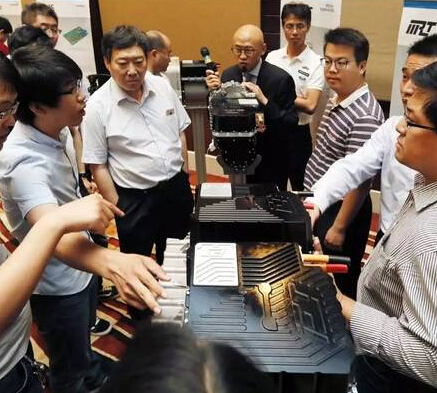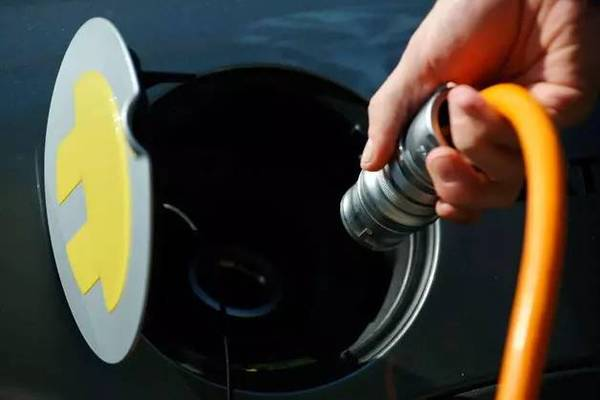From the perspective of energy demand matching, re-planning the electric vehicle structure makes electric power no longer need charging piles, and the external extended range system makes electric vehicles not have mileage anxiety. The 48V low voltage class, four-wheel drive and multi-motor multi-power redundancy ensure the safety of passenger cars.

Figure 1 Schematic diagram of vehicle energy demand and energy conversion capability
It is known from Figure 1 that the vehicle energy demand is variable and its instantaneous value is positive or negative. The energy conversion capability of the vehicle is also variable, and the fluctuation is very intense. Speed is the result of a combination of energy supply and energy conversion capabilities. It is known from the propulsion power curve that the energy brake feed energy is even greater than the overall vehicle output power. For example, in the case of high-speed steep slopes and sudden braking.
Based on the above situation, you can get an understanding. The best way to use energy in electrically driven vehicles is to match energy handling capabilities to energy needs.
The most important indicator of the vehicle's energy handling capacity is power. Vehicles with better performance usually have about ten times the energy demand. For example, the average power is 10KW, and the vehicle power is usually 100KW or more. ,
The 48V electric drive system is currently used primarily for light-mix or ultra-miniature vehicles. From the perspective of energy use. The 48V electric drive system usually drives a single motor for a long time of less than 15KW. The dual axis drive power is less than 30KW. In other words, it does not consider the energy demand of the speed-increasing system due to the instantaneous large fluctuation of speed. The 48V electric drive system can meet the needs of all passenger cars.
If the 48V electric drive system is used as the main energy supply. Can improve the efficiency of 48V system, such as improving drive efficiency, motor efficiency, transmission efficiency and so on. The overall efficiency of the 48V drive system is very high during vehicle travel. Most of the vehicle's energy is provided by the 48V electric drive system (100% is provided by the 48V system when the brake feed is sufficient), thus ensuring the vehicle's energy efficiency is very high. The 48V system has a lower cost and a lower cost, and the cost of improving efficiency is also low.
With the 48V electric drive system as the main power source, the energy conversion capability of the vehicle may be larger. In addition, the control of the electric drive system will be more complicated (speed control), how the output of the motor matches the four-wheel friction (ie, the torque distribution control), and how the vehicle adjusts in special road conditions such as gravel sections, mountain roads, and the like. There are many problems that extend, and there is no solution. The above questions are all in the process of learning, and some have already solved the method and wrote it out. This article is limited to space and only discusses energy conversion capabilities.
The architecture of Figure 2 can also be in various versions, such as single-axis dual motors, dual voltage levels. Single-axis single-motor dual voltage rating. Dual-axis four-wheel drive four-motor dual voltage class. Figure 2 is just a typical architecture. For large electric vehicles, centralized acceleration traction drive, split-axis cruise drive will be the best way. For example, heavy trucks in this form are more maneuverable and can form highway high-speed rails and reduce the number of drivers.
More people will care about the cost of such an electric vehicle. From the raw material point of view, raw materials have not increased. From the process of the process, its separate conditions are more suitable for processing and producing better products. Therefore, the electric vehicle configured in this way is not much more expensive than the current electric vehicle of the same specification.
The vehicle's energy handling capabilities are reflected in many places, the most important being power electronics, batteries and motors. Among them, power electronics is the core of the drive. It is the intersection of energy conversion. The battery is an energy garage. The electric motor is the terminal for the production and consumption of energy. The following is an electric vehicle with a driving power of 130 kW to explain how to use the energy processing capability of the vehicle.
The 130KW drive power is the market's main vehicle configuration. For example, Chuanqi GS4 PHEV, H6 gasoline version and so on. If we split 130KW into 100KW+15KW+15KW. Two of the 15KW are front and rear axle drives and are 48V electric drive systems. 100KW is a generator motor +520V DC battery pack + 100KW reversible drive. The 100KW motor is a three-phase 380V three-phase induction permanent magnet synchronous motor with a reversible driver. The drive is reversible. In other words, an external 380V 50Hz three-phase power supply can be used to charge the 48V battery and the 520V DC battery pack at a power of 100KW (or lower). Equivalent to having a car fast charging pile. The 520V DC battery pack is composed of a super capacitor or a battery pack with a charge and discharge rate exceeding 10C. as shown in picture 2.

Figure 1 Schematic diagram of vehicle energy demand and energy conversion capability
It is known from Figure 1 that the vehicle energy demand is variable and its instantaneous value is positive or negative. The energy conversion capability of the vehicle is also variable, and the fluctuation is very intense. Speed is the result of a combination of energy supply and energy conversion capabilities. It is known from the propulsion power curve that the energy brake feed energy is even greater than the overall vehicle output power. For example, in the case of high-speed steep slopes and sudden braking.
Based on the above situation, you can get an understanding. The best way to use energy in electrically driven vehicles is to match energy handling capabilities to energy needs.
The most important indicator of the vehicle's energy handling capacity is power. Vehicles with better performance usually have about ten times the energy demand. For example, the average power is 10KW, and the vehicle power is usually 100KW or more. ,
The 48V electric drive system is currently used primarily for light-mix or ultra-miniature vehicles. From the perspective of energy use. The 48V electric drive system usually drives a single motor for a long time of less than 15KW. The dual axis drive power is less than 30KW. In other words, it does not consider the energy demand of the speed-increasing system due to the instantaneous large fluctuation of speed. The 48V electric drive system can meet the needs of all passenger cars.
If the 48V electric drive system is used as the main energy supply. Can improve the efficiency of 48V system, such as improving drive efficiency, motor efficiency, transmission efficiency and so on. The overall efficiency of the 48V drive system is very high during vehicle travel. Most of the vehicle's energy is provided by the 48V electric drive system (100% is provided by the 48V system when the brake feed is sufficient), thus ensuring the vehicle's energy efficiency is very high. The 48V system has a lower cost and a lower cost, and the cost of improving efficiency is also low.
With the 48V electric drive system as the main power source, the energy conversion capability of the vehicle may be larger. In addition, the control of the electric drive system will be more complicated (speed control), how the output of the motor matches the four-wheel friction (ie, the torque distribution control), and how the vehicle adjusts in special road conditions such as gravel sections, mountain roads, and the like. There are many problems that extend, and there is no solution. The above questions are all in the process of learning, and some have already solved the method and wrote it out. This article is limited to space and only discusses energy conversion capabilities.
The architecture of Figure 2 can also be in various versions, such as single-axis dual motors, dual voltage levels. Single-axis single-motor dual voltage rating. Dual-axis four-wheel drive four-motor dual voltage class. Figure 2 is just a typical architecture. For large electric vehicles, centralized acceleration traction drive, split-axis cruise drive will be the best way. For example, heavy trucks in this form are more maneuverable and can form highway high-speed rails and reduce the number of drivers.
More people will care about the cost of such an electric vehicle. From the raw material point of view, raw materials have not increased. From the process of the process, its separate conditions are more suitable for processing and producing better products. Therefore, the electric vehicle configured in this way is not much more expensive than the current electric vehicle of the same specification.
The vehicle's energy handling capabilities are reflected in many places, the most important being power electronics, batteries and motors. Among them, power electronics is the core of the drive. It is the intersection of energy conversion. The battery is an energy garage. The electric motor is the terminal for the production and consumption of energy. The following is an electric vehicle with a driving power of 130 kW to explain how to use the energy processing capability of the vehicle.
The 130KW drive power is the market's main vehicle configuration. For example, Chuanqi GS4 PHEV, H6 gasoline version and so on. If we split 130KW into 100KW+15KW+15KW. Two of the 15KW are front and rear axle drives and are 48V electric drive systems. 100KW is a generator motor +520V DC battery pack + 100KW reversible drive. The 100KW motor is a three-phase 380V three-phase induction permanent magnet synchronous motor with a reversible driver. The drive is reversible. In other words, an external 380V 50Hz three-phase power supply can be used to charge the 48V battery and the 520V DC battery pack at a power of 100KW (or lower). Equivalent to having a car fast charging pile. The 520V DC battery pack is composed of a super capacitor or a battery pack with a charge and discharge rate exceeding 10C. as shown in picture 2.
Redefine the electric car! is it possible?
Figure 2 The new architecture of the 48V system. Three motor two sets of voltage levels
Figure 2 The new structure of the electrified vehicle brings two very powerful changes.
The first change: can make the development of electric vehicles out of the shackles of charging piles. People use a fuel car to form a habit, and the energy can only go to the gas station. People think that electric charging must have a charging station, but in fact, electric energy can be charged everywhere without electricity, no need to charge the pile.
The second change is that the 100KW generator motor can be used as a generator for the extended range system. Without increasing the cost, the pure electric vehicle can be used as an extended range vehicle, and only a low-power engine extended range system needs to be rented. Such as a methanol-fueled 10KWe extended range system. If the vehicle consumes 15KWH for 100 kilometers. Then pure electric 300 km + a 10KWe extended range system can guarantee the travel demand, in addition to the parking break, fast charging in the place where there is electricity. This also basically solved the mileage anxiety.
Figure 2 is just a prototype of the idea, if such a method works. Then it can be said that the electric vehicle has been redefined.
To perfect such a structure. I may need another three years to prove. Three years ago, I thought about buying a car for commuting, and by the way, I learned about the structure of the car. Three years later, the car did not buy but wrote more than 200,000 words to describe a thing that does not necessarily exist objectively. I have made a big mistake in these three years. That is, all the things that are done are efforts to achieve and prove: the original idea is correct. Rather than seeking a more correct way.
In the recent 48V electric drive system, I feel that there is an error in the current understanding of the 48V system, and the use is also wrong.
Misunderstanding: 48V system is only suitable for light mixing (oil and gas motorized vehicles are unpleasant, unless they can save fuel).
The 48V system is low cost (the price of a 48V system on the market is usually 20,000 higher than the same configuration of a fuel vehicle, which is not low).
The 48V system does not have advanced high voltage systems. (In the use of electrical energy, no voltage level has ever been advanced, and matching is the most important.)
The 48V system uses a large current. (The choice of current and voltage are engineering problems, comprehensive consideration of the selection of reasonable intervals. Instead of blindly pursuing a single performance, high power is not suitable for 48V. The biggest advantage of 48V is safety)
The 48V electric drive system is inefficient. (Efficiency is also a problem of matching conditions, not principle)
This is not to be unconventional, but to solve some of the problems that exist in reality. Looking at the problem from another perspective will solve some problems and bring out new ones.
















 RCCN WeChat QrCode
RCCN WeChat QrCode Mobile WebSite
Mobile WebSite







